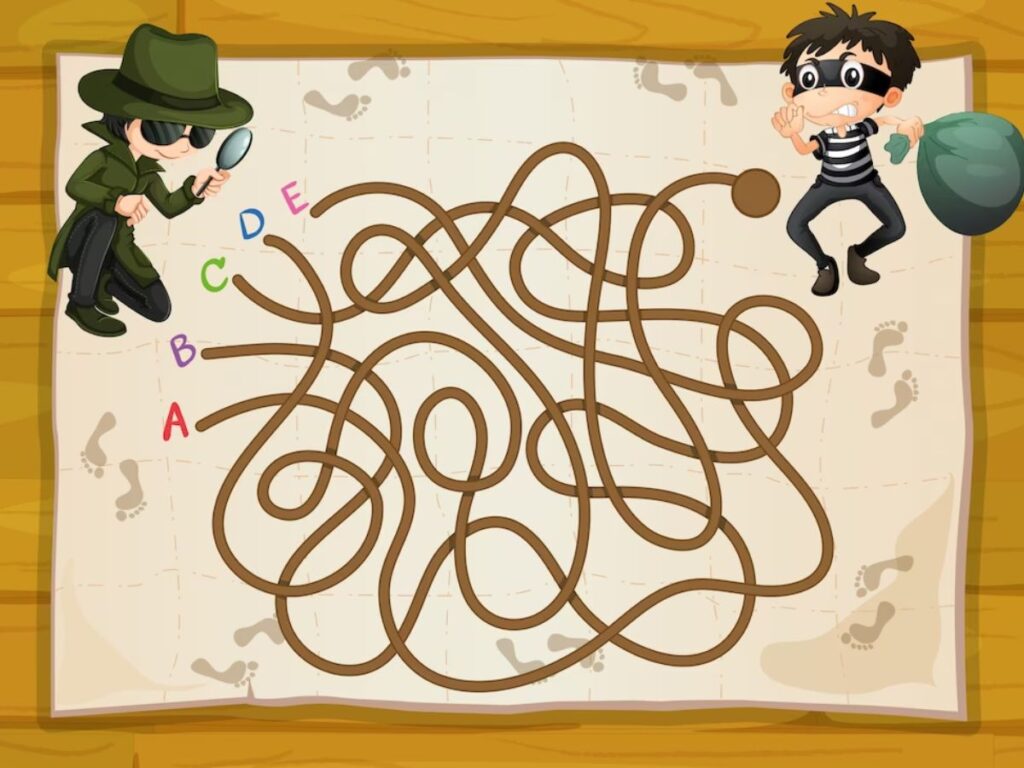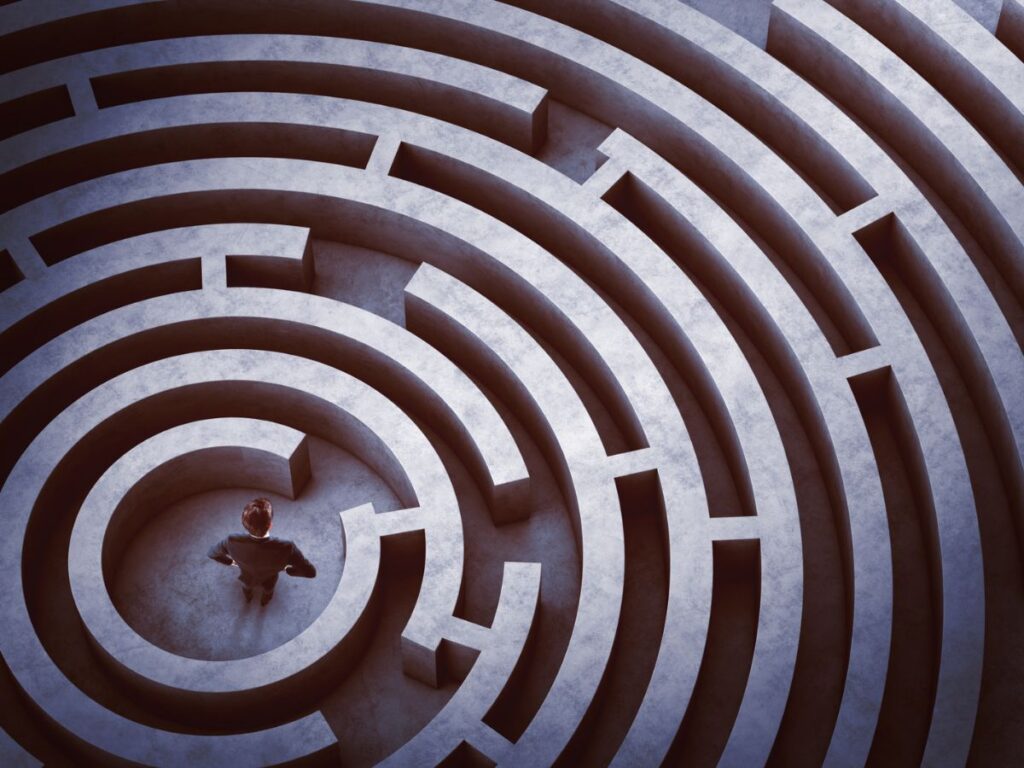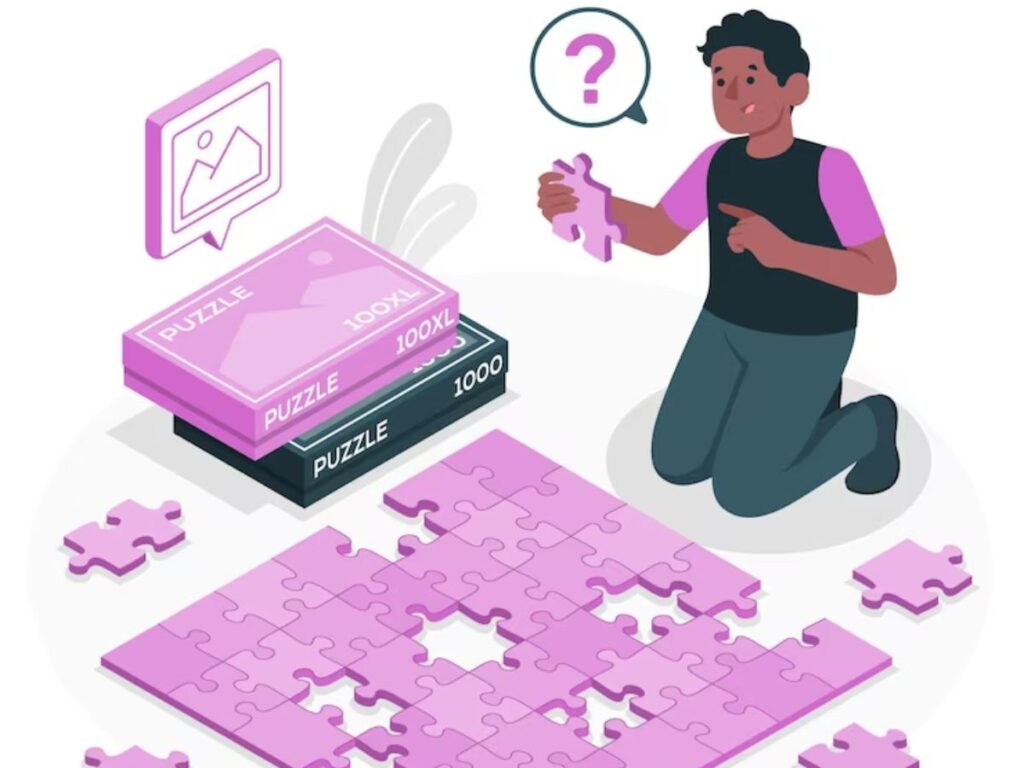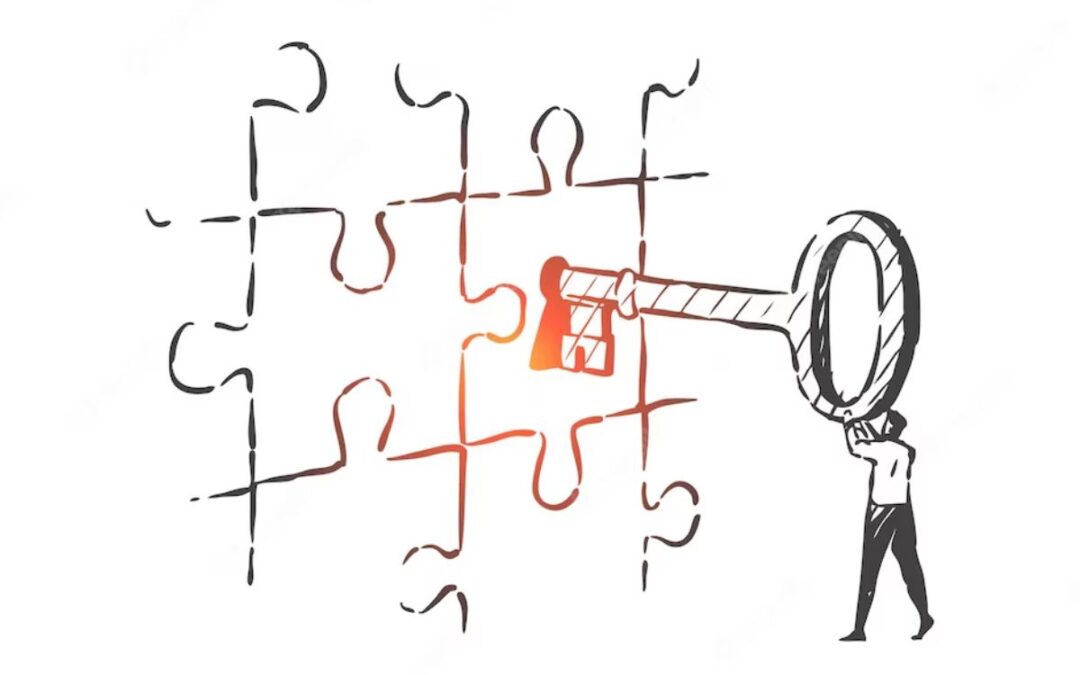Welcome, puzzle enthusiasts! Prepare to have your minds blown.
Today, we’re diving headfirst into the wonderfully addictive world of escape room puzzles, courtesy of the experts at Lost Games Las Vegas. Are you ready?
If you are in Las Vegas, remember to visit us at our facility, located a few minutes from The Lakes.
Buckle up, buttercup. It’s going to be a wild ride!
The Appeal of Escape Rooms and Puzzles
Escape rooms are all the rage these days – for a good reason! They offer an adrenaline-packed, immersive experience that combines teamwork, problem-solving, and fun.
And besides, who wouldn’t want to be a hero and save the day?
How to PREPARE FOR YOUR FIRST ESCAPE ROOM challenge?

What are the 7 Common Escape Room Puzzle Types?
There’s no one-size-fits-all when it comes to escape room puzzles. They come in all shapes and sizes – and that’s what makes them so darn exciting!
Here’s a quick rundown of the most common types of puzzles found in an escape room –
Lock Puzzles
Lock puzzles are often the first hurdle you’ll encounter in an escape room. They’re the gatekeepers, if you will.
Includes – combination locks, key locks, magnetic locks and directional locks. Input a specific sequence of numbers or symbols, find the correct key from a bunch of keys, or enter a specific combination of numbers or symbols in order to unlock them.
Physical Puzzles
You must assemble objects, manipulate physical objects, such as locks, keys, or hidden compartments, and use tools to progress through the game. These hands-on challenges will have you moving, twisting, and turning objects to crack the code. Remember, the proof is in the puzzle!
Logic/Reasoning Puzzles
Logic puzzles require players to use deductive reasoning, inductive reasoning, and abductive reasoning in order to solve a problem or riddle.
Get your Sherlock Holmes hat on because these puzzles require critical thinking and some brainpower.
Word Puzzles
Are you a wordsmith? Put your language skills to the test with these brain-teasing challenges!
Includes – anagrams, crosswords, and word searches. Unscramble a group of letters to form a word or multiple words, find specific words hidden within a grid of letters, or fill in a grid of squares with words that fit both horizontally and vertically.
Number Puzzles
Attention, number nerds! These puzzles are right up your alley. You might even say they “add up” to a good time.
Includes – math problems, sudoku, and number sequences. These brain-teasers invite folks to apply simple math skills like addition, subtraction, or multiplication to crack the puzzle.
Pattern Recognition Puzzles
Pattern Recognition puzzles require players to identify and recognize patterns or sequences in order to solve a puzzle.
Cryptography Puzzles
Includes – Caesar ciphers, morse codes and Pigpen ciphers, require players to decode messages or find hidden patterns in order to uncover a secret message or clue. Channel your inner spy to decode these encrypted messages.
Hidden Object Puzzles
Hidden Object puzzles require players to search the room for hidden items or clues to help them progress. Sometimes a clue is hidden in plain sight, any mysterious signs or objects or spot the difference between two pictures.
Keep your eyes peeled for these sneaky challenges.
How NOT TO PANIC in an escape room.

What are the Different Difficulty Levels in Escape Rooms?
Escape room puzzles can vary in difficulty depending on the theme, target audience, and the designer’s intentions.
Here are 3 general difficulty levels for escape room puzzles, ranging from beginner to expert –
Beginner Level
At this level, puzzles are designed to be simple and straightforward, with clear instructions and minimal hidden information. Solving puzzles usually requires basic observation and logical thinking skills.
These rooms are perfect for first-time players, children, or those looking for a fun and light-hearted experience.
Examples of beginner-level puzzles – are simple math problems, word searches, and basic lock puzzles.
Intermediate Level
Intermediate escape rooms present more complex puzzles that may require a higher level of critical thinking and problem-solving skills. These rooms may involve slightly more challenging riddles, pattern recognition, or spatial reasoning tasks.
Players with some escape room experience or those seeking a moderate challenge will enjoy this level.
Examples of intermediate-level puzzles – are crossword puzzles, number sequences and hidden object puzzles.
Advanced Level
Advanced escape rooms introduce more intricate puzzles that demand greater teamwork, creativity, and communication. Players must think outside the box to solve puzzles involving hidden clues, multi-step processes, and abstract reasoning.
This level suits experienced escape room enthusiasts or those who enjoy a greater challenge.
Examples of advanced puzzles – are cryptography puzzles, complex logic/reasoning puzzles, and multi-step sequential puzzles.
MIND TRIPPING ESCAPE ROOMS IN LAS VEGAS.

How to Succeed in Escape Room Puzzles
Ready to conquer these escape room puzzles?! Here are the next steps to consider.
Remember, carefully select a theme and the difficulty level of the escape room depending on your team’s experience, strengths and weaknesses.
More tips on solving escape rooms like Sherlock and Watson, Morse and Lewis or Harvey Specter and Mike Ross!
- Assemble a Diverse Team
A mix of different skill sets and perspectives can greatly improve your chances of success. Try to include people with strengths in problem-solving, creativity, attention to detail, and communication.
- Communicate Effectively
Clear and open communication is crucial to success in escape rooms. Make sure everyone is sharing their findings, observations, and ideas. Listen to each other, and avoid talking over one another.
- Attention to Detail
Keep an eye out for small clues that could make a big difference.
- Keep Track of Time
Prioritize and strategize to make the most of your time. Pacing yourselves and setting mini-deadlines for puzzles can help you stay on track.
- Thinking Outside the Box
Feel free to let your imagination run wild while coming up with your answers. Remember, there’s more than one way to crack a puzzle! When an idea falls flat, take it as a learning experience and keep going.
- Work Together as a Team
Collaboration is key. Everyone brings unique skills and perspectives to the table. Divide and conquer to solve different puzzles simultaneously to save time.
- Ask Questions
If you’re stuck, don’t hesitate to ask for hints or guidance from your game master. They’re there to help!
- Stay Organized
Designate a space in the room to keep found items, clues, and notes. This will make it easier to monitor your progress and save you time.
- Look for Patterns and Connections
Watch for recurring themes, symbols, or patterns that might help you solve puzzles. Take note of how different clues relate to one another.
- Stay calm and focused
Panic and frustration can hinder your progress. Keep a level head and encourage your teammates to do the same. Stay positive and celebrate small victories to keep morale high.
Why are ESCAPE ROOMS THE BEST FOR TEAM BUILDING EVENTS?

Well, folks, that wraps up our ultimate guide to escape room puzzles. We hope you enjoyed this whirlwind tour through the exhilarating world of locks, codes, and hidden clues.
Remember, practice makes perfect – so don’t be discouraged if you don’t crack every puzzle on your first try. Keep pushing your limits and, most importantly, have fun!
Whether you’re a seasoned escape room enthusiast or a newbie looking for a thrilling adventure, there’s no time like the present to jump into an escape room at Lost Games Las Vegas.
As you’ve seen, a vast array of puzzle types and difficulty levels are waiting to challenge you and your friends. So, gather your squad, and let the games begin!
Happy puzzling, everyone! Cheers!
FREQUENTLY ASKED QUESTIONS
What Questions To Ask In An Escape Room?
When you arrive at an escape room, it’s a good idea to ask the game master or staff questions to ensure you understand the rules and have all the information you need to enjoy the game. Here are some questions you may want to ask –
What’s the theme of the escape room?
What’s the story or backstory behind the escape room?
How many people can play the game at once?
How much time do we have to escape the room?
Can we ask for clues or hints during the game, and how do we ask for them?
Are there any specific rules we need to follow during the game?
Is there anything we should be aware of or be careful about in the room?
Is there a restroom or any other amenities available during the game?
How do we exit the game once we’ve completed it?
Are there any age restrictions or special requirements for playing the game?
How Many Puzzles Are In An Escape Room
The number of puzzles in an escape room can vary depending on the room’s size, theme, and complexity. Generally, most escape rooms have between 8 to 12 puzzles that must be solved to escape within the allotted time limit, which is usually around 60 minutes. However, some escape rooms may have more or fewer puzzles than this range. It’s worth noting that the difficulty of the puzzles can also vary, and some puzzles may require teamwork and collaboration among the players to solve.
What Type Of Clues Do You Get In An Escape Room
The type of clues you get in an escape room can vary depending on the game and theme. Here are some common types of clues you may encounter in an escape room –
Visual Clues: These are often hidden in plain sight, such as symbols, images, or patterns.
Audio Clues: They are presented through sound, such as a series of beeps, a spoken phrase, or a musical cue.
Text Clues: These are presented through written text, such as a note, a diary entry, or a message on a screen.
Puzzle Clues: These clues require you to solve a puzzle or riddle to progress, such as a jigsaw puzzle, a Sudoku puzzle, or a crossword puzzle.
Physical Clues: They require you to interact with objects or the environment in a certain way, such as opening a locked drawer or turning a hidden switch.
Combination Clues: These are clues that combine two or more of the above types of clues, such as a visual puzzle that leads to a text clue that leads to a physical clue.
In addition to these types of clues, you may also receive hints or guidance from the game master or staff. However, it’s important to note that the goal of an escape room is to solve the puzzles and escape with as little help as possible, so hints are usually given sparingly and only when requested.
How Many Levels Are There In An Escape Room?
Escape rooms typically have one main level divided into several rooms or areas. However, the number of rooms can vary depending on the theme and difficulty of the game. Some escape rooms may have multiple levels or floors, but these are less common. It’s important to note that the number of rooms or levels doesn’t necessarily determine the game’s difficulty, as the puzzles and clues themselves can be more challenging than the physical layout.
How Do You Find Clues In An Escape Room?
Clues can be hidden in various places within an escape room, and it’s up to you to find them! Here are some common places to look for clues:
Hidden compartments or drawers
Decorative objects or props
Writing or symbols on walls or surfaces
Locks or combinations
Audio or visual cues
Anything that appears to be mysterious
It’s important to communicate with your team and share any clues you find, as they may be connected to other puzzles or lead to a solution. Remember to think outside the box and consider all possibilities when searching for clues!






